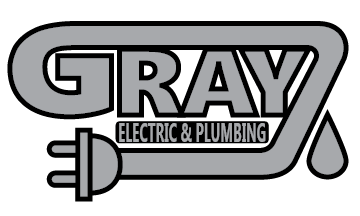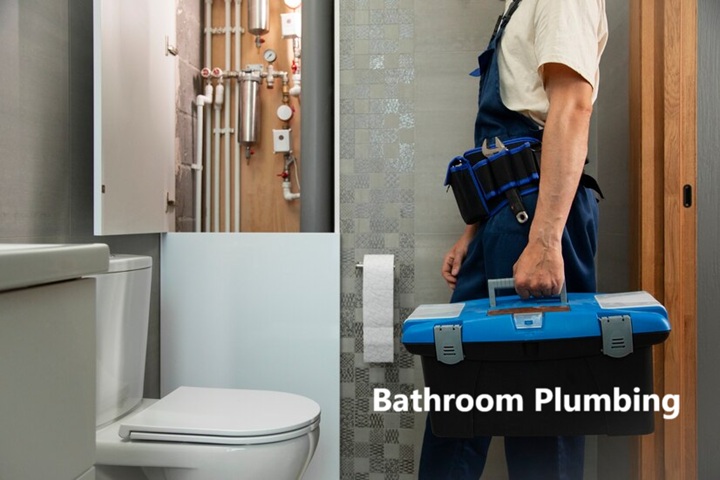Bathroom plumbing is an essential part of every home. Without it, we wouldn’t have running water for showers, sinks, or toilets. While it may seem complicated, understanding the basics can help you fix minor issues, save money, and know when to call a professional. Let’s explore how bathroom plumbing works, common problems, and what you can do to keep everything running smoothly.
How Does Bathroom Plumbing Work?
Bathroom plumbing has two main jobs: bringing water in and removing it.
1. Water Supply System
This system delivers clean water to your faucets, shower, and toilet. Water comes into your home through copper, PVC, or PEX pipes. Valves control the water flow, so you can turn it on or off.
2. Drainage System
After you use water, it has to go somewhere. The drainage system carries used water out of your home through pipes. These pipes are sloped, so water flows down by gravity. Vent pipes help air move through the system, ensuring water flows smoothly.
Common Bathroom Plumbing Problems
1. Dripping Faucets
A dripping faucet wastes water and increases your bill. This usually happens because a washer or valve inside the faucet is worn out. Fixing it is simple and inexpensive.
2. Clogged Drains
Hair, soap, and dirt can block your sink or shower drain. A plunger or a drain snake can usually clear the clog. To prevent this, use a drain cover and clean it regularly.
3. Running Toilets
A toilet that won’t stop running wastes a lot of water. This is usually caused by a broken flapper or fill valve. Replacing these parts is quick and easy.
4. Low Water Pressure
If your shower or sink has weak water flow, the problem might be a clogged aerator, mineral buildup, or a leak in the pipes. Cleaning the aerator or checking for leaks can solve this.
Parts of a Bathroom Plumbing System
1. Pipes
Pipes carry water to and from your bathroom. Supply pipes bring clean water in, while drainpipes carry waste out.
2. Valves
Valves control water flow. Shut-off valves are located under sinks and behind toilets. Knowing where they are can help in an emergency.
3. Fixtures
Fixtures include sinks, faucets, showers, bathtubs, and toilets. These are the visible parts of your plumbing system and need regular cleaning and maintenance.
4. Vent Pipes
Vent pipes are hidden but essential. They let air into the system so water flows properly. Without vent pipes, drains might clog or smell bad.
Simple DIY Plumbing Fixes
You don’t need to be a plumber to fix minor problems. Here are a few easy solutions:
1. Fix a Dripping Faucet
Turn off the water supply and unscrew the faucet handle. Replace the worn-out washer or O-ring. Screw the handle back on and turn the water on again.
2. Unclog a Drain
Pour boiling water down the drain to loosen clogs. If that doesn’t work, use a plunger or a drain snake.
3. Stop a Running Toilet
Remove the tank lid and check the flapper. If it’s worn or damaged, replace it. Also, check the float to ensure it’s at the right level.
Preventing Plumbing Problems
Prevention is better than repair. Here are some tips to keep your bathroom plumbing in good shape:
- Use Drain Covers: These stop hair and debris from draining.
- Avoid Harsh Chemicals: Chemical drain cleaners can damage pipes. Use natural methods instead.
- Check for Leaks: Look for water stains or dripping pipes regularly.
- Clean Fixtures: Hard water can leave mineral deposits on faucets and showerheads. Clean them often to keep water flowing.
When to Call a Professional
Sometimes, plumbing problems are too big to handle on your own. Call a licensed plumber if:
- You have a major leak or burst pipe.
- Water is backing up into your sink or tub.
- Your toilet is clogged and won’t flush.
- There’s a strange smell coming from your drains.
A professional plumber has the tools and experience to fix these issues quickly and safely.
Bathroom Plumbing for Renovations
If you’re remodelling your bathroom, plumbing is a key part of the project. Here are some tips to ensure everything goes smoothly:
1. Plan Ahead
Decide where you want fixtures like the sink, toilet, and shower. Make sure the plumbing layout supports these changes.
2. Upgrade Old Pipes
If your home has old pipes, consider replacing them during the renovation. Modern materials like PEX are durable and easy to work with.
3. Work with a Professional
Even if you’re handy, bathroom renovations often require permits and inspections. Hiring a professional ensures the work meets local codes.
Saving Water with Efficient Plumbing
Water-saving fixtures can reduce your water bill and help the environment. Here are some options to consider:
- Low-Flow Toilets: These use less water per flush.
- Water-Saving Shower-heads: They maintain good pressure while using less water.
- Faucet Aerators: Mix air with water, reducing the flow without affecting performance.
Maintaining Your Bathroom Plumbing
Regular maintenance keeps your plumbing system working well and prevents costly repairs. Follow these steps:
- Inspect Pipes and Valves: Look for leaks or signs of wear.
- Flush Your Drains: Pour boiling water down the drains once a month to clear minor clogs.
- Clean Your Fixtures: Wipe down faucets and shower-heads to remove mineral buildup.
- Test Your Water Pressure: Use a gauge to check if it’s within the normal range (40-60 psi).
FAQs About Bathroom Plumbing
Why is my faucet dripping?
A worn-out washer or valve is the most common cause. Replacing these parts usually fixes the issue.
How do I unclog a bathroom sink?
Use a plunger or drain snake to clear clogs. Avoid chemical cleaners as they can damage pipes.
What causes low water pressure in my shower?
Mineral buildup in the shower-head or a pipe leak could be the reason. Cleaning the shower-head often solves the problem.
Why does my toilet keep running?
A faulty flapper or fill valve is usually to blame. Replacing them can stop the water from running.
How can I prevent clogged drains?
Drain covers should be used to catch hair and debris and cleaned regularly. Do not pour grease or heavy debris down the drain.
What are vent pipes in plumbing?
Vent pipes allow air to flow through the plumbing system, helping water drain properly and preventing sewer gas odors.
How do I find my bathroom’s shut-off valves?
Shut-off valves are usually under the sink or behind the toilet. They let you stop the water flow during repairs or emergencies.
What’s the best way to save water in the bathroom?
Install low-flow toilets, water-saving shower-heads, and faucet aerators. These reduce water use without sacrificing performance.
When should I call a plumber?
Call a plumber if you notice persistent leaks, significant clogs, water backing up, or strange smells from your drains.
Can I fix a leaking pipe myself?
Small leaks can be temporarily patched with a plumber’s tape, but it’s best to call a professional for a permanent solution.
Conclusion
Plumbing in bathrooms is very relevant in making a home comfortable and efficient. Learning how this works can allow you to carry out minor repairs, prevent problems, and precisely determine when to call a professional. Take care of your plumbing system to save money, reduce stress, and enjoy a bathroom that works ideally daily.
Need help with your bathroom plumbing? Contact us today for expert advice and services. Let’s keep your bathroom in top shape!

